Locally suited plants project
/in Community, General, News, Projects /by wslcWhether you are planting paddock tress, windbreaks or just establishing a few natives in the garden, plants grown from seed of local provenance provide the best chance for success.
The reason for this is that local plants are more suited to the local environment. They would have evolved over time to cope with environmental variables such as rainfall patterns, frosts, winter and summer extremes, soil types and landscape position.
Watershed Landcare’s ‘Local Plants for the Local Environment’ project provided our community with locally grown, native tubestock as well as building their knowledge and skills to grow their own by selecting for viable seed, ensuring successful germination and giving seedlings the best start.
The project, funded by Michael King and Landcare Australia, aimed to highlight the importance of plant selection for re-vegetation projects, focusing on the benefits of utilising locally sourced, endemic seed for propagation. Namely, local native plants:
- are likely to be better adapted to the local environment, including the soil and climatic conditions,
- are more likely to readily establish and regenerate than those from alternate sources and require less care,
- provide habitat for beneficial local native fauna, while keeping the unique character of the local landscape,
- not only look like they belong, but help to maintain the health of the local environment.
Watershed Landcare volunteers identified suitable seed collection sites, conducted seed collection excursions and processed, propagated and grew 1100 plants. Eucalyptus, casuarina and hardenbergia species were grown from locally collected seed and additional acacia, angophora, brachychiton, callistemon, eucalyptus, grevillea, hakea and lomandra seed was obtained from other sources.
The mature tubestock was made available to Watershed Landcare members conducting on-ground re-vegetation projects as well as the wider community at the Mudgee Small Farm Field Days.
A seed collection and propagation workshop was also run as part of the project, providing participans with hands-on experience of basic identification features of some commonly found local plant species; the tools and techniques required to select viable seed; timing, methods, storing collected material; equipment and processing of collected material; methods and materials for propagation and the best time to sow seed.
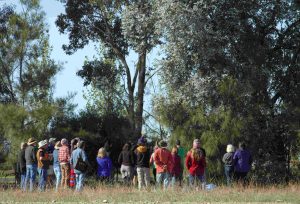
Seed Collection: Participants learning how to collect and propagate native seed at the Local Plants for the Local Environment workshop.
The emphasis of the workshop was to introduce people to a few tricks to ensuring a good germination, and doing so at low or no cost in terms of equipment. Participants also gained an insight into local plant ecology and had access to seed and material propagated on the day.
Ever wanted to grow your own native plants? Our volunteers are busy growing the next batch of tubestock, contact us to find out how you can get involved: info@watershedlandcare.com.au.
A decade of Green Day
/in Community, General, News, Projects /by wslcWatershed Landcare’s Green Day celebrated it’s 10th birthday last week. This year’s event was the biggest ever, with over 800 kids from 16 schools attending the environmental expo.
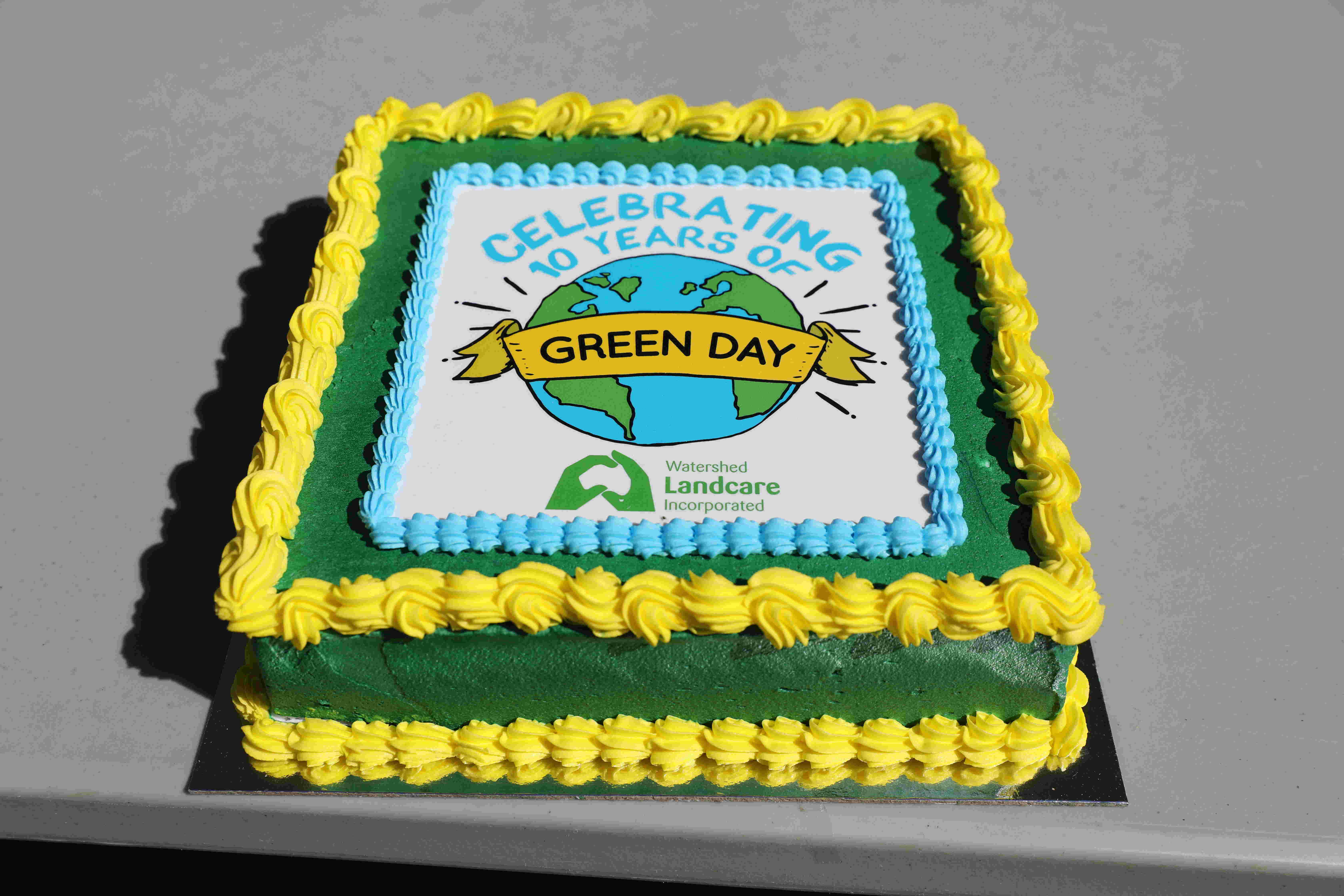
Photo credit: Simone Kurtz courtesy of the Mudgee Guardian.
On September 16, year 5 and 6 students from local schools visited the Mudgee Showground to experience a day centred around the theme Go WoW or Go Make a Difference – War on Waste.
And we even had a celebrity special guest to help us celebrate. This year’s keynote speaker was Craig Reucassel, host of ABC TV’s Logie award winning series War on Waste. Craig’s humorous and entertaining presentation built on the topics explored in the TV series, such as food waste and packaging, and challenged the children to consider their impacts on the environment and consider alternatives.
Students also participated in a range of hands-on and educational workshops centered around the themes of reduce, reuse, recycle and waste impacts. Over 30 presenters from organisations including Oz Harvest, Clean Up Australia, NetWaste and the Royal Agricultural Society of NSW gave the children a broad appreciation of the scale of the waste issue, the associated problems, and importantly, how they can do their bit to tackle the problem.
“The feedback we have received from participating students and their parents has been very positive. There’s real enthusiasm from students, they get a buzz from the day and the take home messages stay with them for quite some time.” said Watershed Landcare Coordinator, Claudia Wythes.
Green Day would not be possible without the generous support of our sponsors. Watershed Landcare would like to thank Central Tablelands LLS, Mid-Western Regional Council, Moolarben Coal Operations and Peabody Energy for their contribution.
“A huge ammount of man hours, all voluntary, goes into organising Green Day. We would like to extend a huge thank you to all our speakers and volunteers for donating their time and making the event such a success.” said Ms Wythes.
“Also a special thanks to the volunteers from Mudgee High School who chaperoned the school groups to their workshops. Even with a record number of kids, everything ran very smoothly and no one got lost.” she continued.
This event is supported by Watershed Landcare and is a part of the NSW Government’s Local Landcare Coordinators Initiative, supported through the partnership of Local Land Services and Landcare NSW.
Saving the beautiful small Purple Pea
/in Community, General, News, Projects /by wslcDid you know that there’s a rare plan growing right on Mudgee’s doorstep?
The Small Purple Pea, Swainsona recta, is a slender, erect perennial herb growing to 30 cm tall. It flowers from spring to summer, with each flower stalk bearing up to 20 bright purple, pea flowers.
Once widespread in grassland and open woodland of south-eastern Australia, the species is now listed as endangered with only a few scattered populations existing in NSW, the ACT and Victoria.
Over the past 60 years it’s know range has been drastically reduced due to loss and degradation of habitat. Increased grazing pressure, land clearing and competition from invasive weeds have all contributed to the decline of the Small Purple Pea.
The Central Tablelands LLS have launched a project to work with community and local government to protect this beautiful endangered plant. And you can get involved.
The project, funded by the Federal Government’s National Landcare Program, will undertake works to assist in the recovery of Small Purple Pea populations in grassland and woodlands around Mandurama, Wellington and Mudgee. Activities will include identification workshops, on-ground surveys to find new populations, weed control and fire management.
“With the Small Purple Pea being endangered we are lucky in Mudgee to have two viable populations on our doorstep. Its exciting to see these populations being looked after and its great to be able to get the community involved in this project.” said Evelyn Nicholson, Central Tablelands LLS Land Services Officer.
“All community members, regardless of skill level are welcome to come and take part in our surveys in the Avisford reserve or over at Wellington which will hopefully identify new populations of the Pea and help protect it further into the future.” she continued.
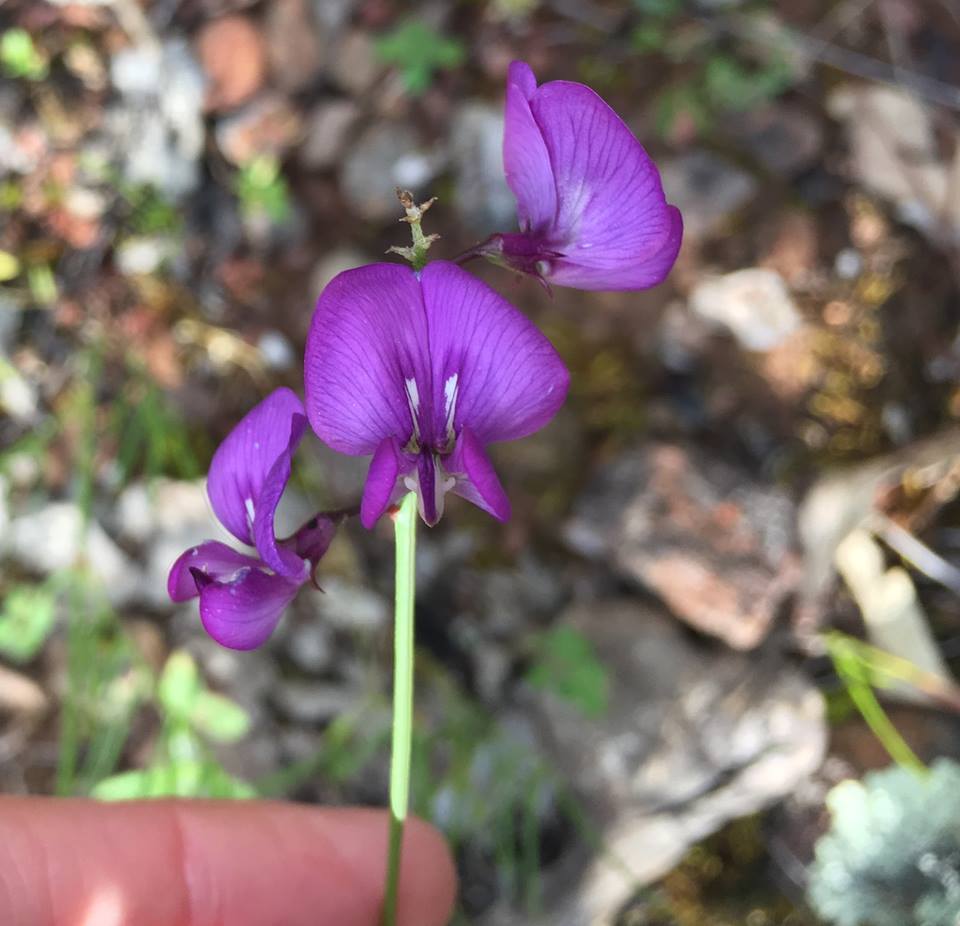
The project will kick off with a couple of Small Purple Pea identification workshops and members of the community are invited to attend. Come along and learn more about the plant, it’s threats and how you can assist in the recovery of the species.
The Mudgee ID workshop will be held at the Mudgee Common/Flirtation Hill on Sunday 23 September from 10:30am-1:30pm. For more information or to RSVP contact Evelyn Nicholson on 0427 637 907 or email: evelyn.nicholson@lls.nsw.gov.au.
The Wellington ID Workshop will be held at Burrendong Arboretum on Monday 24 September from 10:30am-1:30pm. For more information or to RSVP contact Libby McIntyre on 0429 019 309 or email: libby.mcintyre@lls.nsw.gov.au.
Lunch and refreshments will be provided at the workshops.
Volunteers are also needed to conduct regional surveys between 17 and 28 September. No skills are necessary as all training will be provided. Contact Evelyn Nicholson to register your interest.
It’s a ten year celebration of Green Day
/in Community, General, News, Projects /by wslcWatershed Landcare has been running Green Day for local school children for 10 years! In this time over five and half thousand children have visited the Mudgee Showground to learn about environmental themes such as biodiversity, energy, waste and water.
On September 16, local schools will again bring their Year 5 and 6 students to experience a day centred around the theme Go WoW or Go Make a Difference War on Waste.
“Our theme is all about taking action. Workshops will provide students with key take-home messages.” said Vivien Howard, Chair of Watershed Landcare.
“We are fortunate to have over 20 speakers and workshop presenters to give children a broad appreciation of the scale of the waste issue, the associated problems and importantly how they can do their bit to tackle the problem.”
“We are excited to have secured Craig Reucassel as our keynote speaker this year, his second series of War on Waste currently airing on ABC TV is a timely backdrop to our event.” she continued.
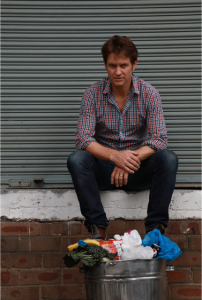
ABC’s War on Waster presenter, Craig Reucassel, will be the keynote speaker at this year’s Green Day.
Green Day takes place on Thursday, 13 September 2018 at Mudgee Showground. This event is supported by Watershed Landcare, Mid-Western Regional Council, Central Tablelands Local Land Services, Moolarben Coal and Wilpinjong Coal and is a part of the NSW Government’s Local Landcare Coordinators Initiative, supported through the partnership of Local Land Services and Landcare NSW.
To find out more, contact Beth Greenfield on 0438 090 525 or email beth.greenfield@watershedlandcare.com.au.
Is it still a weed at $70/kg
/in Community, General, News, Projects, Resources /by wslcThe latest trend in top Sydney restaurants is weeds. Farmers friends, purslane, salsify, wild asparagus and nettle are all on the menu and chefs are willing to pay top dollar.
One man is on a mission to connect farmers, landholders and budding foragers from the Central Tablelands to the catering and restaurant industry of Sydney.
After many years working as a foraging educator Diego Bonetto has established Wildfood Store, a marketplace for edible wild food. The platform and registered company will offer farmers and people in regional NSW the opportunity to subsidise their income by harvesting desirable edible wild plants.
“There is an unrelenting request form the city’s fine dining industry for well presented, clean, atypical edible species.” said Diego.
For example young, good quality tips of farmers friends can fetch $7-8 for a 100 g punnet.
“Farmers have edible weeds growing all over so it is just a matter to train people how to harvest and package and get the produce to the city.” he continued.
Diego has secured some seed funding from the NSW Government via an initiative in collaboration with the Kandos School Of Cultural Adaptation.
The concept is simple. Chefs in the city want clean, well-presented and fresh wild edibles. Diego will train farmers on how to harvest and package the produce and via a distribution company in the city deliver them to the top restaurants in Sydney. The farmers get paid for their efforts and Diego will bring their stories to the city’s tables.
Diego will be running a Foragers Training Workshop in Kandos on Saturday, 11 August from 10am-12:30 pm.
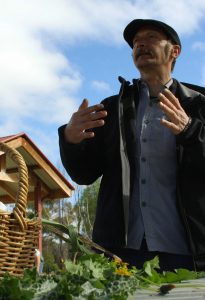
Diego Bonneto will provide training on how to harvest and package desirable wild plants and get the produce to the city.
Diego Bonetto is an Italian artist, father, forager, speaker, keen naturalist and award winning cultural worker based in Sydney. Diego works with chefs, scientists, architects, academics, herbalists, brewers, soap makers, producers, educators and land owners, providing programs, workshops, tours, community engagement strategies and exhibitions. You can read more about Diego on his website: http://www.diegobonetto.com.
Attendance to the workshop is $10, visit https://www.diegobonetto.com/shop/mid-western-foragers-training-aug11 to book your spot.
Can’t make the workshop? Diego will also be available to conduct consultation visits to local properties to identify wild food produce potential during the week of August 6 to 10. Contact Diego on 0411 293 178 or info@diegobonetto.com for more information.
Artful way to capture the right attention
/in Community, General, News, Projects, Resources /by wslcAs consumers become increasingly interested in where and how their food and fibre are produced, more and more farmers and producers are turning to direct marketing to sell their wares. But how do you tell your story in the right way to the right people?
Join us for a ‘Visual Storytelling – the art of capturing the right attention’ workshop on Sunday, 1 July and learn how you can use social media to convert your customers into a community.
Watershed Landcare have invited Sophie Hansen, founder and creator of Local is Lovely and My Open Kitchen and 2016 National Rural Woman of the Year, and Annie Herron, painter, sculptor and art teacher who has taught art to all ages for over 40 years and has been exhibiting for 30 years, to present the workshop.
Social media is a visual medium and so great photos are an important part of your storytelling. In this three-hour workshop we will run through how to compose, capture, caption and share images that tell your story in the most engaging way possible.
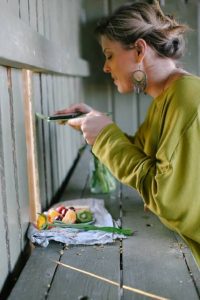
Creative Afternoon: 2016 National Rural Woman of the Year, Sophie Hansen, will present the Visual Storytelling workshop.
We will cover the basics of composing engaging images, how to shoot them on your smartphone (or camera if you prefer) and how to edit them so they really pop.
Then we’ll move on to the words – how to write and edit captions that tell a story, that engage and motivate your customers so they become community members and your biggest advocates.
This will be a lovely afternoon of creativity, strategy and figuring out how to tell your story in the right way to the right people.
The Visual Storytelling workshop will be held from 12 noon to 4pm on Sunday, 1 July at Augustine Function Centre, 50 George Campbell Drive, Mudgee. All welcome, the workshop is free to attend with lunch provided but please RSVP by Tuesday, 26 June as numbers are strictly limited.
For more information or to RSVP contact Watershed Landcare Coordinator, Claudia Wythes, on 0412 011 064 or email: claudia.wythes@watershedlandcare.com.au.
This event is supported by Watershed Landcare through funding from the Central Tablelands LLS from NSW Catchment Action and the Australian Government’s National Landcare Programme and is a part of the NSW Government’s Local Landcare Coordinators Initiative, supported through the partnership of Local Land Services and Landcare NSW.
Paddock trees linking our landscape
/in Community, General, News, Projects /by wslcThe Central Tablelands region is one of the most highly cleared areas of woodland in NSW. Watershed Landcare have been running a project aiming to enhance areas of highly cleared ecosystems by improving linkages between remnant native vegetation.
The Paddock Trees project, supported by Central Tablelands Local Land Services through funding from the Australian Government, provided financial assistance to landholders to increase the extent of paddock trees and clusters on the land they manage. Individual landholders were eligible to apply for up to $2,750 in funding for materials or labour to conduct on-ground works that improve vegetation extent and quality.
Six landholders from Lue, Rylstone, Gulgong, Stoney Creek and Mudgee participated in the project, conducting on-ground works to protect existing remnant vegetation and establish new corner, cluster and single paddock tree plantings.
Participating landholders worked with Watershed Landcare’s botanist to select suitable, endemic species to meet their desired project outcomes. At one project site, the planting was designed specifically to aid with the remediation of a heavily eroded, saline area.
As part of the project 8 ha were re-vegetated with over 1000 trees. When mature, these plantings will not only provide connectivity to existing remnant vegetation and act as wildlife corridors but will also provide other valuable ecosystem services such as habitat for pollinators as well as birds and bats beneficial for pest control and maintain and improve soil structure and fertility.
A Paddock Trees and Farm Vegetation Management workshop was also held in April as part of the project. Watershed Landcare invited Dhyan Blore, Principal Consultant at Native Biota Rural Ecology, to share her extensive knowledge in rural vegetation management and the establishment and care of native plants.
The workshop focused on providing landholders with knowledge and practical information to enable them to establish and mange their own native vegetation plantings, covering topics such as species selection for various sites and purposes, tree planting techniques, short term follow up and later management, including thinning and grazing.
Want to find out more about our projects and what we do? Visit our website, www.watershedlandcare.com.au, or contact one of our Coordinators, Claudia Wythes on 0412 011 064 or Agness Knapik on 0435 055 493 or email: info@watershedlandcare.com.au.
This project is supported by Watershed Landcare and Central Tablelands LLS through funding from the Australian Government and is a part of the NSW Government’s Local Landcare Coordinators Initiative, supported through the partnership of Local Land Services and Landcare NSW.
